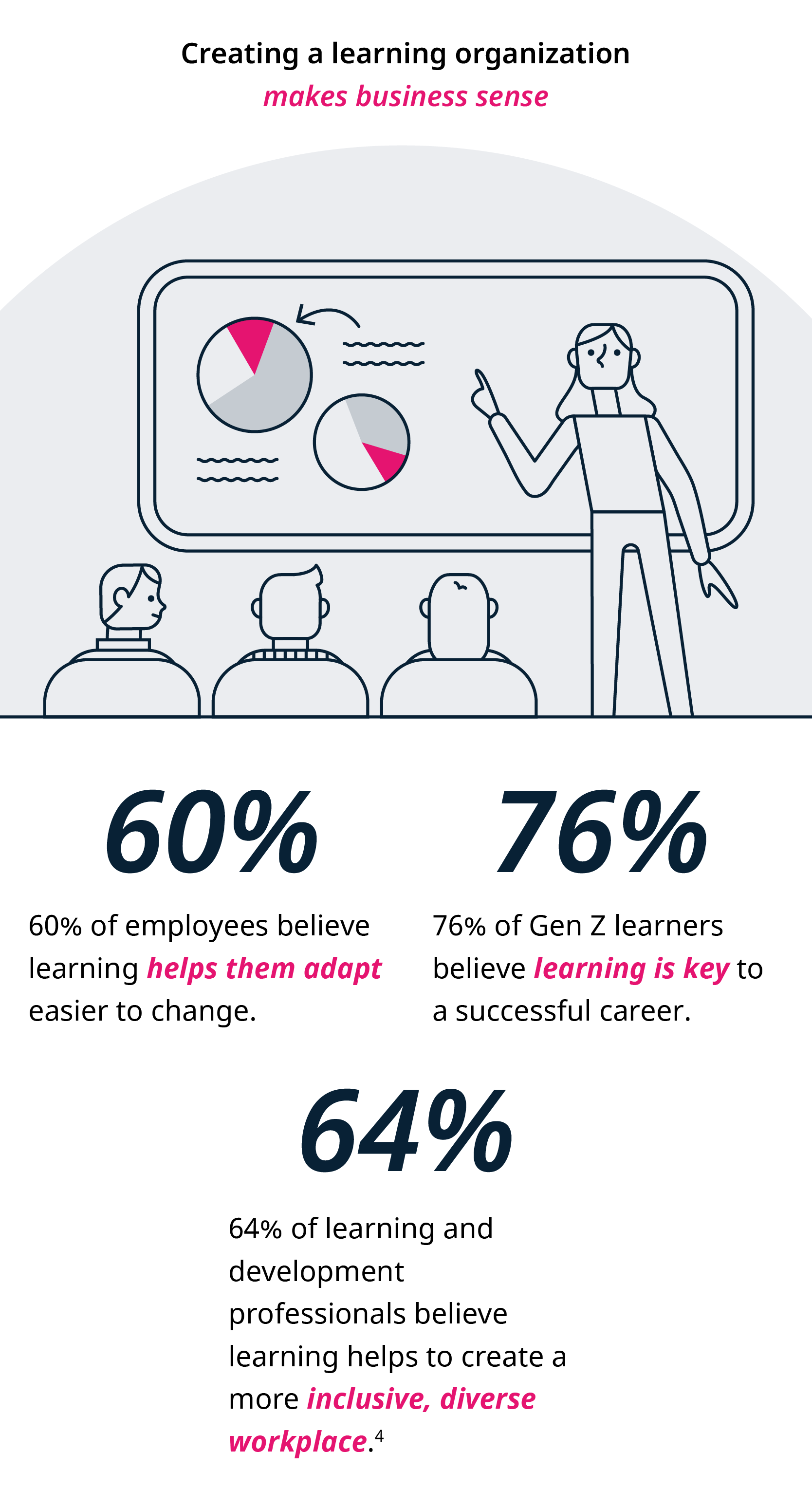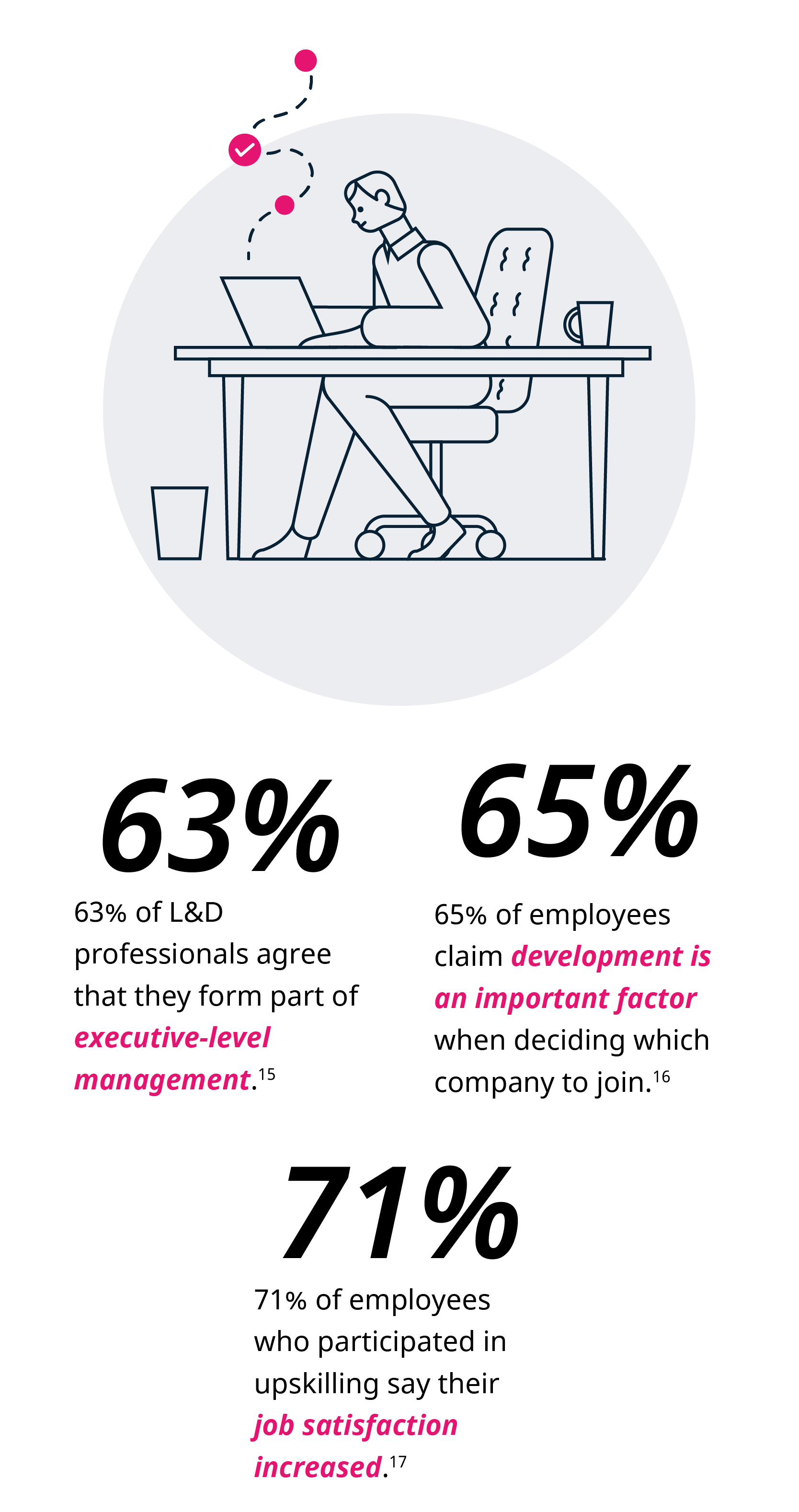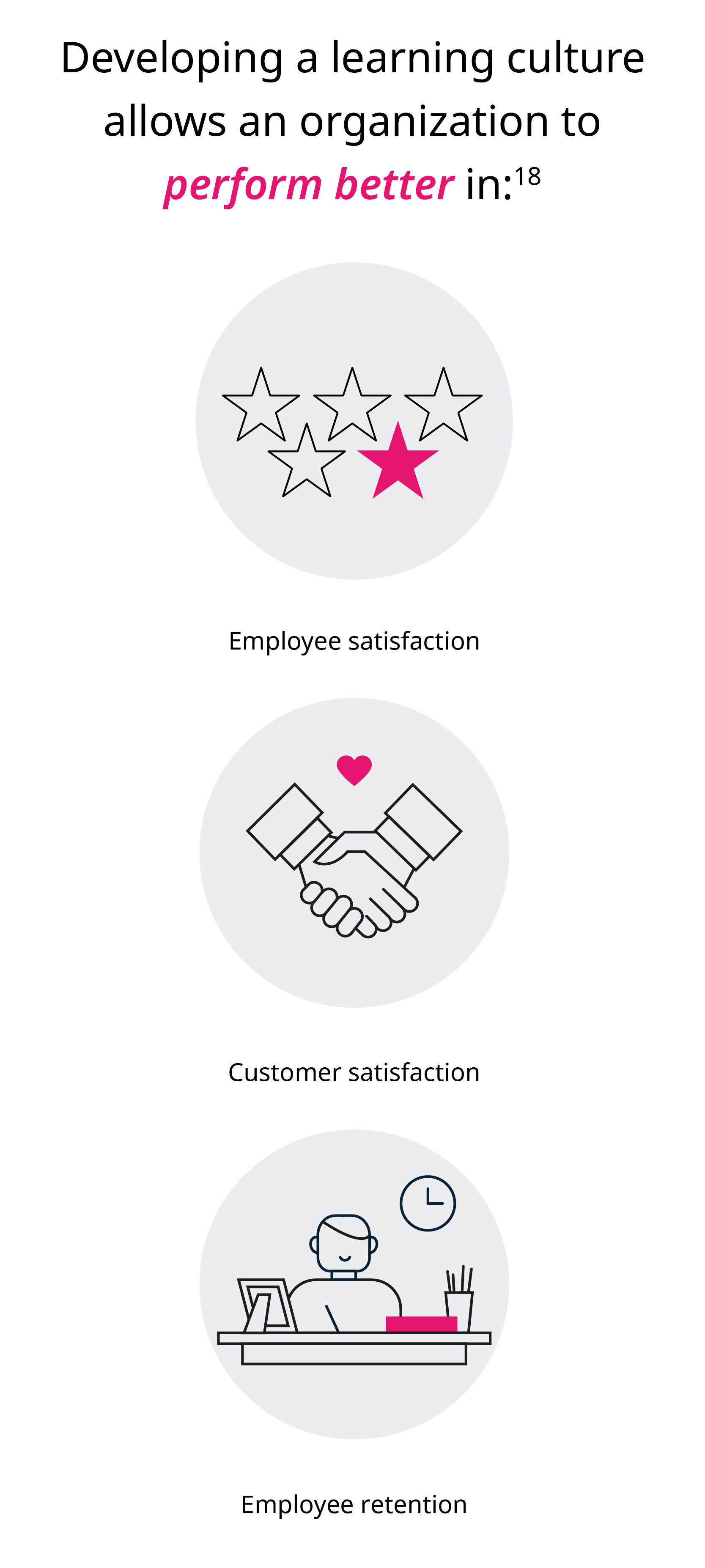Step-by-Step Guide on Creating a Learning Organization
Developing a learning organization makes good business sense.
Peter Senge, author of The Fifth Discipline: The Art and Practice of the Learning Organization, defines a learning organization as a place where workers have the freedom to learn and the opportunities to improve and reach their collective goals. These organizations encourage a curious mind and welcome challenges to the status quo.1
There are numerous benefits, but creating this kind of organization can be challenging.
One of the main obstacles standing in the way of companies creating a learning organization is the rapid shift toward mass digitization and the difficulty of staying ahead of changes, says Jake Wengroff, social business expert and author at Synapse. “The overnight need to digitize workplace systems and processes only served to accelerate the need for talent developers to upskill and reskill their workforces,” he notes.2
Training that’s applied inconsistently is another barrier to building an effective learning and development program. “Waiting until skills decline – or become totally obsolete – can create a dangerous, too-little-too-late scenario,” Wengroff continues. “The more removed the employee is from the skills or knowledge needed to perform a task properly, the more time and effort are needed to train that employee.”3

How do you make learning matter in your organization? Let’s take a closer look at the steps executives, team managers, and professionals working in learning and development can take to prioritize learning.
Peter Senge’s five disciplines of the learning organization
- Personal mastery
This occurs when individuals have a clear vision of what they want to achieve and a realistic perception of how to do it.5 Lifelong learning should be a focus within learning organizations to help employees achieve their goals and experience personal growth.6 - Mental models
Learning organizations and their employees should self-evaluate consistently to challenge limiting beliefs that may impact progress.7 - Shared vision
A shared vision is created through employee engagement and ensures that employees work towards business objectives because they share the company vision.8 - Team learning
Building on the previous steps, team learning enables members to expand their knowledge and fosters better collaboration, communication, and cooperation.9 - Systems thinking
This type of thinking reflects the observational process of an entire system and emphasizes how every action correlates to another.10 “By enhancing each of the other disciplines, it continually reminds us that the whole can exceed the sum of its parts,” explains Senge.11
Through continual and open communication, these five disciplines of the learning organization can grow within a workforce. Note that it does, however, take a concerted effort where teams introduce and drive long-term training and development plans together.12
Three tried-and-tested learning methods
The practical steps on how to develop a learning organization is different for every business. However, the following three methods of training and development are worth considering:
1. Formal training
Companies can choose to do in-house training, though this is often cost- and time-sensitive, and usually outsourced. The benefits of formal training are that it’s easier to manage and more structured and consistent.13
2. Informal training
This kind of training encourages soft skills (communication, leadership, relationship) development through intentional recognition, meaningful feedback, and direct mentorship.
3. Rewarding learning cultures
Rather than only rewarding performance, companies promote a culture of growth and improvement to demonstrate that continual learning is valued.14

A learning organization is one of shared responsibilities. However, the role of team leaders and human resource managers is vital in creating a good company culture to foster this vision.

Gain the knowledge and skills to implement a long-term, collaborative learning strategy in your organization. Browse a range of strategic and practical online short courses to enrich your career in human resources.
Make a lasting impact on your workforce. Gear up with an online HR course.
- 1 Zeeman, A. (Nd). ‘Senge’s five disciplines of learning organizations’. Retrieved from ToolsHero. Accessed January 20, 2022.
- 2 Wengroff, J. (Dec, 2021). ‘5 Common mistakes made in upskilling and reskilling’. Retrieved from Synapse.
- 3 Wengroff, J. (Dec, 2021). ‘5 Common mistakes made in upskilling and reskilling’. Retrieved from Synapse.
- 4 (Nd). ‘2021 Workplace Learning Report’. Retrieved from LinkedIn. Accessed January 20, 2022.
- 5 Zeeman, A. (Nd). ‘Senge’s five disciplines of learning organizations’. Retrieved from ToolsHero. Accessed January 20, 2022.
- 6 Sharma, N. (Dec, 2017). ‘5 Key traits of learning organizations’. Retrieved from eLearning Industry.
- 7 Sharma, N. (Dec, 2017). ‘5 Key traits of learning organizations’. Retrieved from eLearning Industry.
- 8 Zeeman, A. (Nd). ‘Senge’s five disciplines of learning organizations’. Retrieved from ToolsHero. Accessed January 20, 2022.
- 9 (Jul, 2017). ‘Importance of learning organization’. Retrieved from UK Essays.
- 10 Zeeman, A. (Nd). ‘Senge’s five disciplines of learning organizations’. Retrieved from ToolsHero. Accessed January 20, 2022.
- 11 Lannon, C. (Nd). ‘Learning organizations from invention to innovation’. Retrieved from The Systems Thinker. Accessed January 20, 2022.
- 12 Cooper, J. (Nov, 2018). ‘Creating a learning culture in your organisation’. Retrieved from Ausmed.
- 13 (Nd). ‘The value of formal training in your organization’. Retrieved from ReviewSnap.
- 14 Andreatta, B. (Dec, 2021). ‘4 Ways to build a culture of learning’. Retrieved from Training Industry.
- 15 (Nd). ‘2021 Workplace Learning Report’. Retrieved from LinkedIn. Accessed January 20, 2022.
- 16 (2021). ‘The American Upskilling Study: Empowering Workers for the Jobs of Tomorrow’. Retrieved from Gallup.
- 17 (2021). ‘The American Upskilling Study: Empowering Workers for the Jobs of Tomorrow’. Retrieved from Gallup.
- 18 (May, 2021). ‘The top benefits of training to employers (plus, How to upskill effectively!)’. Retrieved from Unboxed Training & Technology.